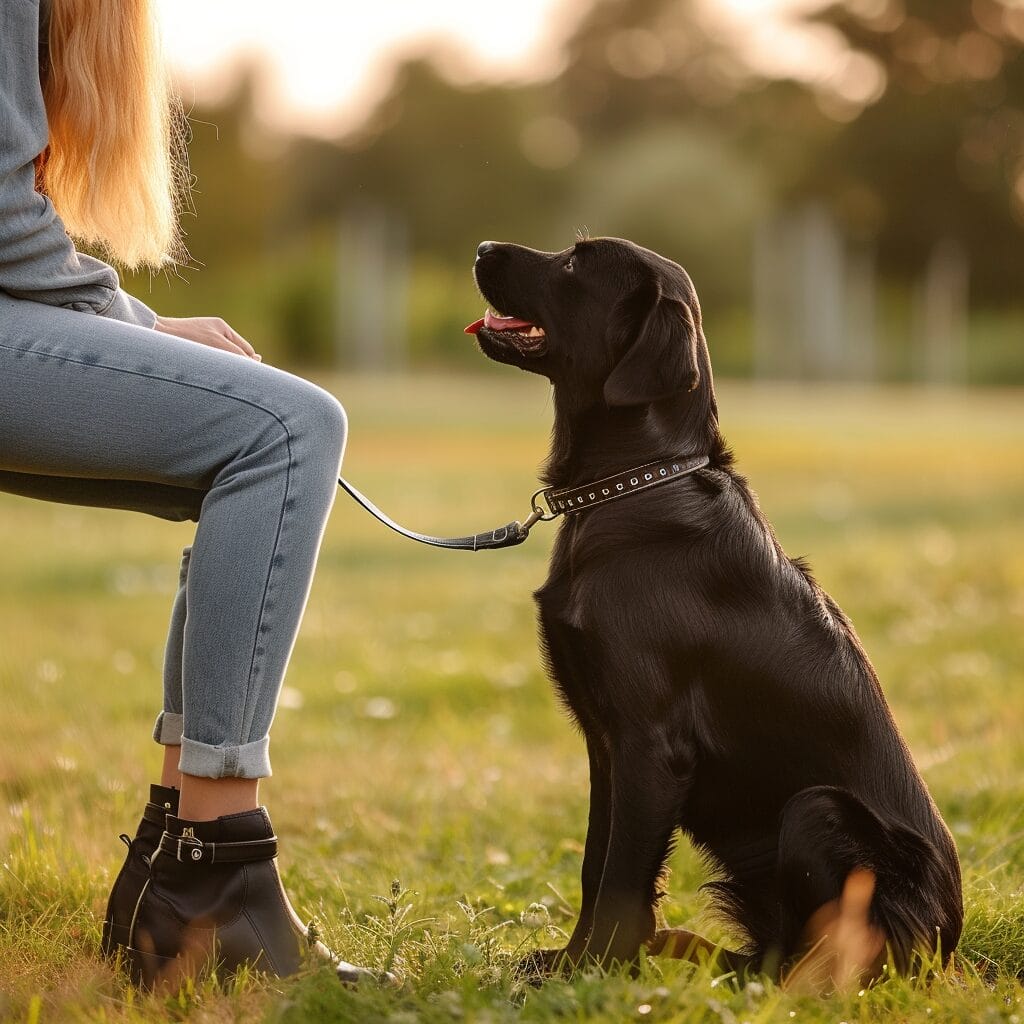Embark on a journey to transform your furry friend’s behavior with obedience training for dogs. Say goodbye to endless barking, jumping, and leash pulling as you unlock the secrets to a well-behaved canine companion.
Discover the power of positive reinforcement techniques that will have your dog following commands like a pro in no time. From sit and stay to walking politely on a leash, watch as your pup learns new tricks effortlessly.
Embrace the joy of building a strong bond based on trust and respect through effective training methods that bring out the best in your four-legged pal.
Obedience Training for Dogs:
Key Takeaways
- Start Early: Begin obedience training for your dog early on to establish good behavior habits.
- Select a Qualified Instructor: Choose an obedience training instructor who is experienced, knowledgeable, and uses positive reinforcement techniques.
- Use Proper Equipment: Ensure you have the necessary equipment like a leash, treats, and toys to make training sessions effective.
- Understand Canine Learning: Learn about how dogs learn to tailor your training methods for better results.
- Practice Consistently: Regular practice of essential commands like sit, stay, and come is key to successful obedience training.
- Address Issues Promptly: Deal with common training problems promptly by adjusting your approach and seeking professional help if needed.
Importance of Obedience Training for Dogs
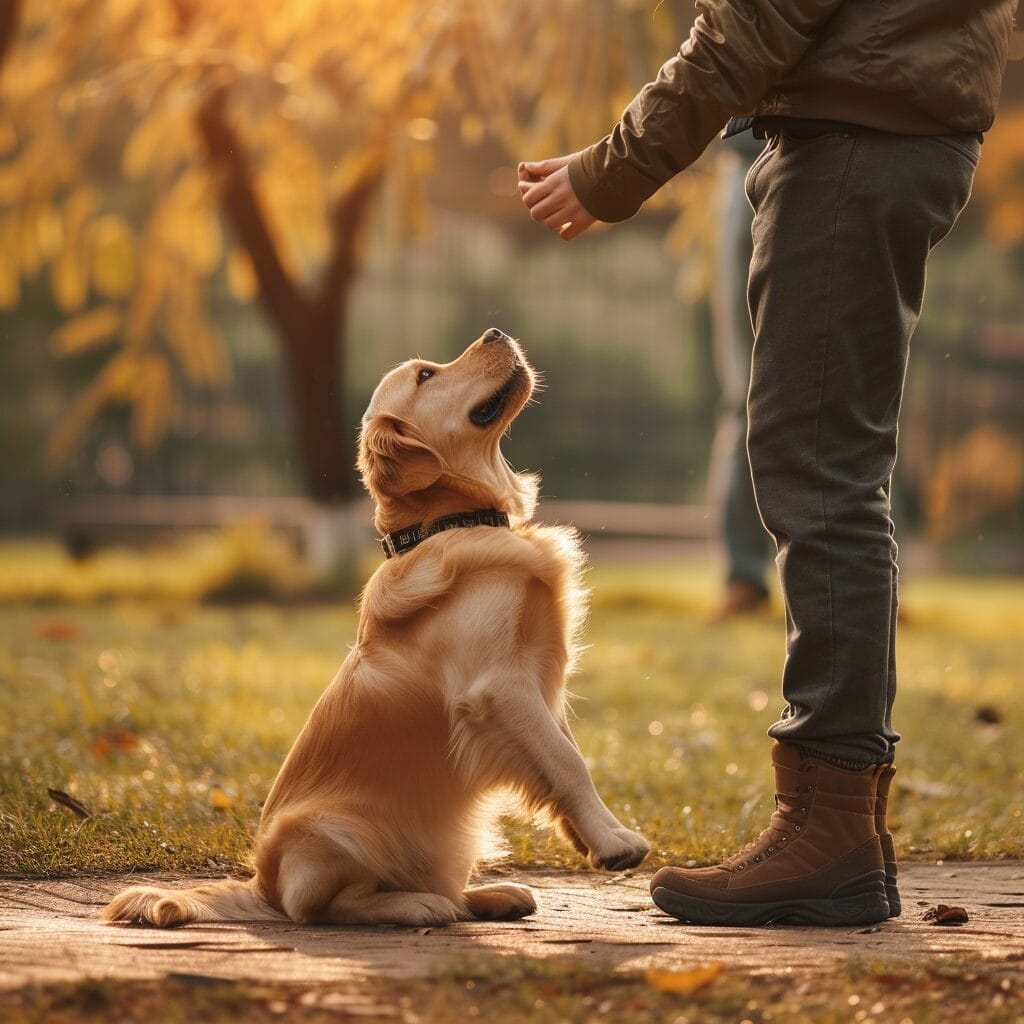
Establishing a Strong Bond
Obedience training for dogs is essential as it fosters a strong bond between the owner and the dog. Through training sessions, dogs learn to understand commands like sit, stay, or come. This communication helps them comprehend what their owners expect from them. As a result, trust develops between the pet and its owner. For instance, when a dog follows commands correctly and receives praise or treats as rewards, it reinforces positive behavior.
Proper obedience training ensures that dogs behave well in various situations. They learn to greet people politely without jumping on them or refrain from aggressive behaviors towards other animals. This not only makes interactions with others more pleasant but also prevents potential accidents or conflicts. By teaching basic commands like “leave it” or “drop it,” owners can prevent their pets from picking up harmful objects while out on walks.
Ensuring Safety
Safety is paramountObedience training plays a crucial role in ensuring the safety of both the dog and others around them. A well-trained dog will respond promptly to recall commands even in distracting environments such as parks or busy streets. This ability reduces the risk of your furry friend running off unexpectedly into dangerous situations like traffic areas.
Moreover, obedience training helps address behavioral issues that could pose risks to the dog’s safety and well-being. For example, teaching a dog not to chase cars can prevent accidents caused by running onto roads suddenly. By instilling good behavior through consistent training methods, owners create boundaries that keep their pets safe in various scenarios.
Getting Started with Basic Obedience Training
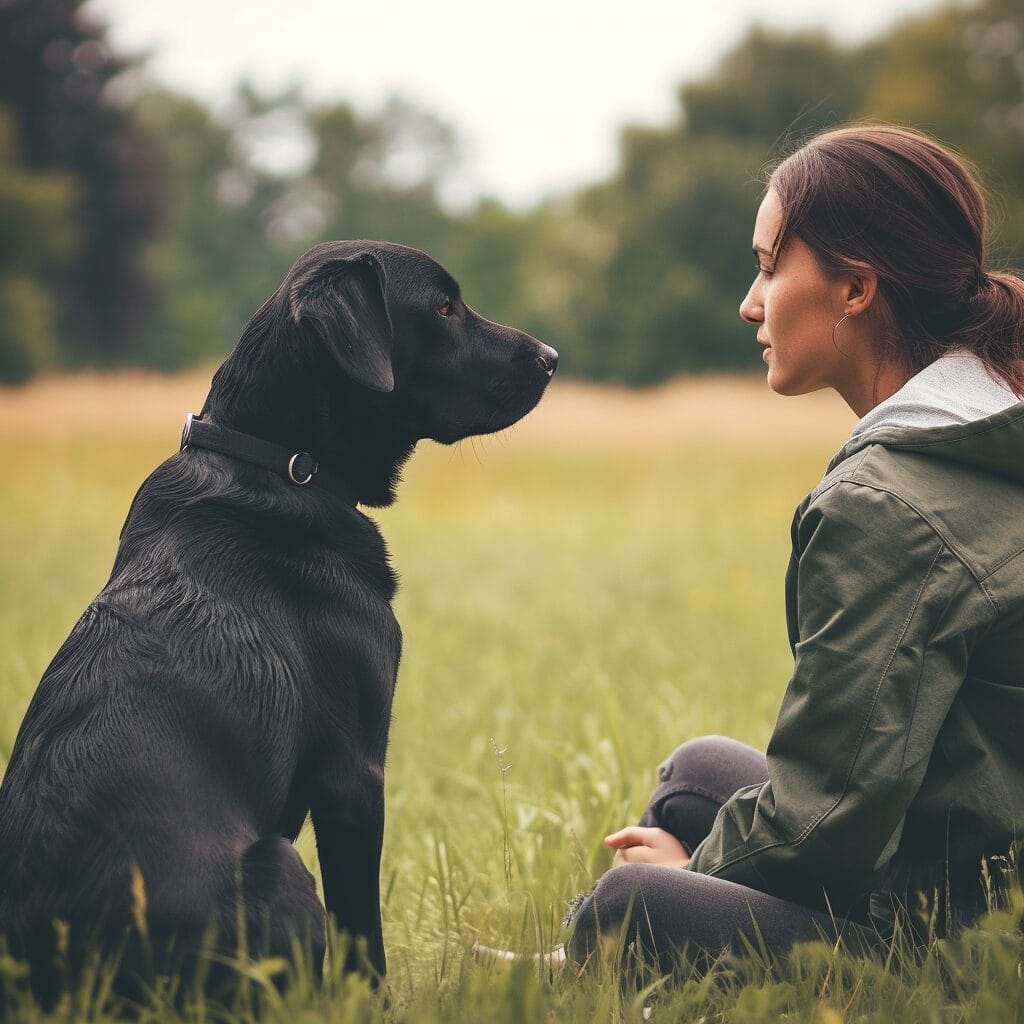
Simple Commands
Start obedience training for dogs by teaching them simple commands like sit, stay, and come. These are the building blocks of good behavior in your furry friend. Use treats as rewards to reinforce positive behavior when they follow these commands correctly.
Consistency is key in obedience training. Practice these commands daily with your dog to help them understand what is expected of them. Remember to be patient learning takes time, especially for our four legged companions.
Positive Reinforcement
Always opt for positive reinforcement techniques over punishment. Rewarding good behavior encourages your pet to repeat those actions. This could mean giving treats or verbal praise when they listen and respond correctly.
Using a clicker can also be an effective way to train your dog positively; the sound signals that they’ve done something right and a reward is coming their way! Dogs respond well to this immediate feedback system during their obedience training sessions.
Choosing the Right Obedience Training Instructor
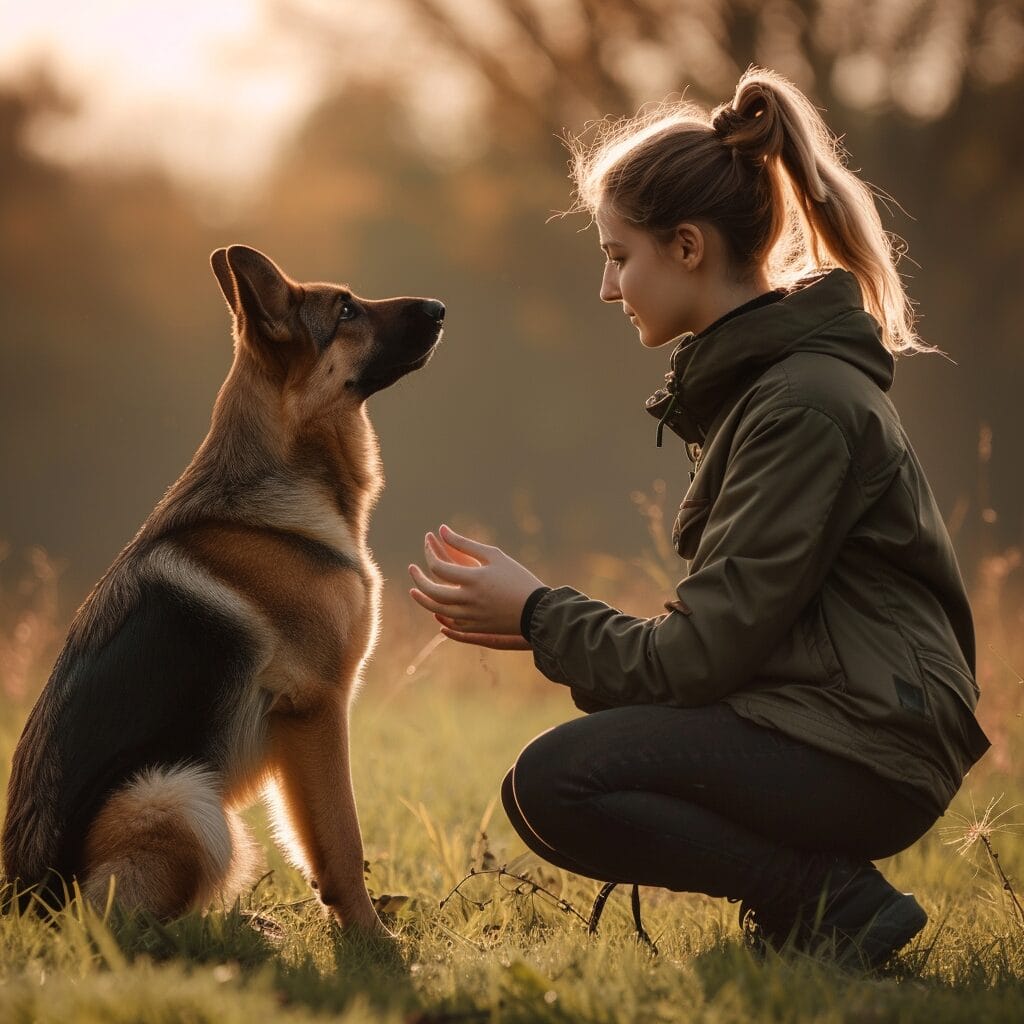
Certified Trainers
When selecting an obedience training instructor, prioritize certified professionals with a background in dog training. These trainers have the necessary expertise to guide your dog effectively. Look for individuals who are experienced specifically in obedience training, as this specialization ensures they understand the unique requirements of teaching dogs basic commands and good behavior.
Certified trainers bring a level of professionalism that can significantly impact your dog’s learning experience. Their certification demonstrates a commitment to ongoing education and staying up-to-date with the latest techniques in dog obedience. By choosing a certified trainer, you are investing in quality instruction for your furry companion.
Training Methods and Philosophy
Consider the training methods employed by potential instructors before making a decision. Each trainer may have a different approach to teaching obedience, so it’s essential to find one whose methods align with your beliefs on dog training. Some trainers may focus on positive reinforcement, while others might use correction-based techniques.
Understanding an instructor’s philosophy is crucial because it will influence how they interact with your dog during classes. Positive reinforcement methods are often preferred by many owners as they promote good behavior through rewards and encouragement rather than punishment.
Recommendations from Other Owners or Veterinarians
Seek recommendations from fellow dog owners or veterinarians when searching for an obedience training instructor. Personal referrals provide valuable insights into an instructor’s effectiveness and rapport with both dogs and their owners. Veterinarians can offer guidance on reputable trainers in your area based on their professional network.
Essential Equipment for Obedience Training

Leash and Collar
During obedience training for dogs, having a sturdy leash and collar is crucial. These tools provide control during training sessions, allowing the trainer to guide the dog effectively. For instance, a short leash can help maintain proximity and focus, while a collar with proper fit ensures safety and comfort.
Using these essential equipment pieces helps establish boundaries between the dog and the trainer. The leash acts as a physical connection, enabling clear communication of commands. Moreover, it prevents distractions or wandering off during training exercises.
- Ensures control during sessions
- Establishes boundaries between dog and trainer
- Prevents distractions
Treats or Rewards
In obedience training, treats or rewards serve as positive reinforcement for desired behavior. When a dog follows commands correctly, rewarding them with treats reinforces that behavior positively. This encourages the dog to repeat the action in hopes of receiving another treat.
By using treats strategically throughout training sessions, trainers can motivate their dogs to learn new commands quickly. Positive reinforcement creates an enjoyable experience for both the dog and the trainer, fostering a strong bond based on trust and cooperation.
- Encourages desired behavior through positive reinforcement
- Motivates dogs to learn new commands quickly
- Strengthens bond between dog and trainer
Training Aids
Training aids like clickers or target sticks play a vital role in dog obedience instruction by assisting in teaching specific commands effectively. Clickers produce distinct sounds that signal correct behavior instantly when paired with rewards. Target sticks help direct a dog’s attention towards certain actions or objects during training exercises.
These aids simplify communication between trainers and dogs by providing clear signals that facilitate learning comprehension swiftly without confusion.
- Clickers produce distinct sounds.
- Target sticks direct attention effectively.
- Simplify communication for quick learning.
Understanding How Dogs Learn for Effective Training
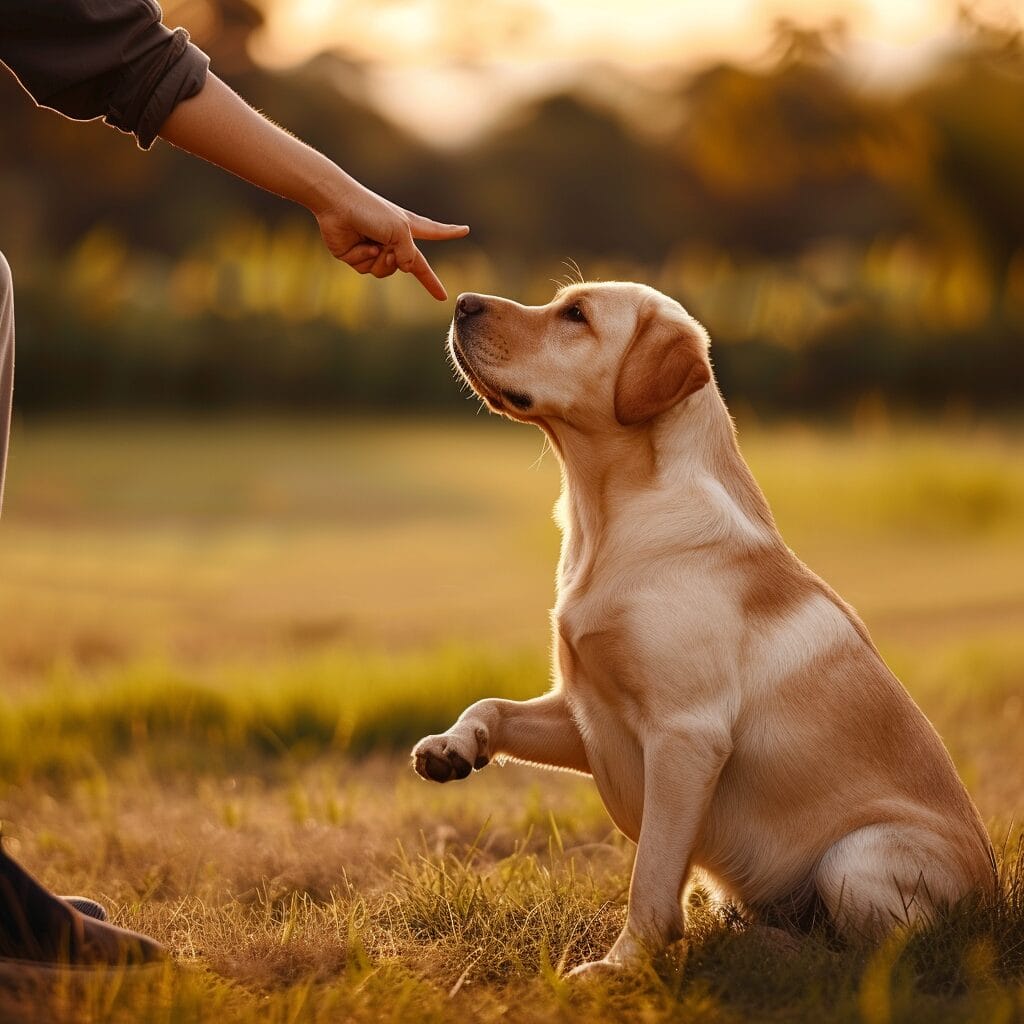
Association and Repetition
Dogs learn through association and repetition. When a dog performs an action and receives a reward, they associate the action with the outcome. For example, if a dog sits when told to do so and gets a treat, it links sitting with receiving a reward. This association strengthens as the behavior is repeated over time.
Pros:
- Creates strong connections between actions and outcomes.
- Helps dogs understand what behaviors lead to rewards.
Cons:
- Can be time consuming.
- Requires consistency from the trainer.
Positive Reinforcement
Positive reinforcement plays a crucial role in obedience training for dogs. By rewarding good behavior instead of punishing bad behavior, dogs are encouraged to repeat desirable actions. For instance, praising or giving treats to a dog for following commands reinforces their understanding that obeying leads to positive outcomes.
Key Information:
- Encourages desired behaviors without instilling fear.
- Strengthens the bond between owner and pet.
Consistency in Training Methods
Maintaining consistency in training methods is essential for effective obedience training. Using consistent cues, rewards, and corrections helps dogs understand what is expected of them. If different commands or responses are given for the same behavior by various family members or trainers, confusion can arise in the dog’s mind.
- Provide clear instructions consistently across all training sessions.
- Use similar tones of voice when giving commands to avoid confusing your pet.
- Ensure everyone involved in training follows the same approach for uniformity.
Essential Commands in Dog Obedience Training

Sit Command
Teaching your dog the sit command is crucial for obedience training. It helps them learn to sit on cue and wait calmly. This command is valuable in various situations, like when guests arrive or during mealtime. To teach this command, hold a treat close to their nose and move your hand up. As their head follows the treat, their bottom will naturally lower into a sitting position. Once they are seated, say “sit” and reward them with the treat.
Another method involves gently pressing down on their hindquarters while saying “sit.” Remember to praise them immediately once they comply with the command successfully.
Pros:
- Useful for calming dogs.
- Easy to teach.
Cons:
- Some dogs may take longer to grasp it.
Stay Command
The stay command trains your dog to remain in one place until given permission to move. This cue is essential for keeping your pet safe in potentially dangerous situations, such as near roads or crowded areas. Start by having your dog sit, then show an open palm towards them while saying “stay.” Take a step back and return quickly if they stay put; gradually increase the distance over time.
Consistency is key when teaching this command; start with short intervals before extending the duration slowly.
- Begin practicing indoors with minimal distractions.
- Gradually progress by adding more distractions like toys or treats nearby.
Come Command
The come command encourages dogs to return promptly when called by their owners—a vital skill that ensures safety during walks or off-leash play sessions at parks. To train this cue effectively, use positive reinforcement techniques such as offering treats or verbal praise each time they come when called.
Tips:
- Always maintain a happy tone of voice when giving the “come” cue.
- Avoid scolding if they do not respond immediately; instead, go back to basics and practice more often.
Common Dog Training Problems and Solutions

Leash Pulling
Teaching obedience training for dogs involves addressing common issues like leash pulling. To tackle this problem, dog owners can employ loose leash walking techniques. By teaching their furry friends to walk calmly beside them without pulling, the walks become more enjoyable for both the owner and the dog. One effective method is to stop walking whenever the dog pulls on the leash, only continuing when there is slack in the lead.
Another technique includes using treats or rewards to encourage good behavior while walking on a leash. This positive reinforcement helps reinforce unwanted behaviors by associating them with something pleasant. Consistency and patience are key when training dogs not to pull on the leash.
Pros:
- Creates a more enjoyable walking experience
- Strengthens bond between dog and owner
Cons:
- Requires time and patience
- May take some dogs longer to learn than others
Jumping Behavior
Another common issue that arises during obedience training for dogs is jumping on people. When adult dogs jump up on individuals as a way of greeting, it can be bothersome or even dangerous if they knock someone over. To address this behavior, owners should train their pets to greet people politely without jumping.
One solution is to ignore the dog when they jump up until all four paws are back on the ground before giving attention or affection. Teaching an alternative behavior such as sitting when meeting new people can redirect their energy positively towards a desired action rather than jumping.
Key Information:
- Ignoring jumping behavior can help discourage it
- Teaching an alternative behavior like sitting redirects their focus
Benefits of Canine Obedience Training

Improved Behavior and Socialization Skills
Training your dog in obedience can lead to better behavior and improved social skills. Dogs that undergo obedience training are more likely to follow commands, behave well around people and other animals, and exhibit fewer behavioral issues like excessive barking or aggression. This training helps them understand how to act appropriately in various situations, making them more pleasant companions.
Obedience training also plays a crucial role in enhancing your dog’s socialization skills. By exposing them to different environments, people, and animals during training sessions, dogs learn how to interact positively with others. This exposure reduces the likelihood of fear or aggression towards unfamiliar stimuli, creating a well-rounded and socially adept pet.
Pros:
- Better behavior
- Improved social skills
Cons:
- Time-consuming
- Requires consistency
Enhanced Communication Between Owner and Dog
One significant benefit of canine obedience training is the improvement in communication between you as the owner and your furry friend. Through consistent commands and responses during training sessions, dogs learn to understand what is expected of them when given cues by their owners. This clear communication fosters a stronger bond based on trust and understanding.
Think of it as learning a new language together; through obedience training, both you and your dog establish a common vocabulary that enables seamless interaction. When your dog responds correctly to commands such as “sit” or “stay,” it reinforces this communication loop positively.
Key Information:
- Clearer communication
- Stronger bond
Examples:
- Teaching basic commands like sit, stay, come
- Using hand signals along with verbal cues for better understanding
Increased Mental Stimulation for a Happier Healthier Dog
Engaging in obedience training provides mental stimulation for dogs beyond physical exercise alone. Just like humans need mental challenges to stay sharp, dogs benefit from tasks that require focus and problem-solving during training sessions. This mental workout not only keeps them entertained but also contributes significantly to their overall happiness.
By incorporating activities that challenge their cognitive abilities into daily routines through obedience training exercises like puzzle games or agility courses, dogs remain mentally sharp throughout their lives.
- Mental stimulation leads to happier pets.
- Variety in activities prevents boredom.
- Examples include hide and seek games or scent work exercises.
Top Tips for Successful Dog Obedience Training

Short and Frequent Sessions
Training your dog in short, frequent sessions helps maintain their focus. Long training sessions can lead to boredom and distractions. For example, aim for 10-15 minute sessions a few times a day.
It’s like studying for an exam cramming all the information at once might not stick as well as spreading it out over several study sessions. Short bursts of learning are more effective than one long session.
Positive Reinforcement
Using positive reinforcement during obedience training is crucial. When your dog follows a command correctly, reward them with treats or praise. Positive feedback encourages good behavior and strengthens the bond between you and your furry friend.
Think of it as receiving compliments when you do something well – it makes you feel good and motivates you to keep doing great work. Dogs respond well to rewards just like we do!
Summary
You’ve now grasped the importance of obedience training for your furry friend, from selecting the right instructor to understanding canine learning behaviors. Equipped with knowledge on essential commands and troubleshooting common training hurdles, you are ready to embark on this rewarding journey. The benefits of obedience training extend beyond a well-behaved dog; it strengthens your bond and enhances communication.
Now, it’s time to put these insights into action. Start with the basics, be patient, and celebrate small victories along the way. Remember, consistency is key in shaping your dog’s behavior positively. So, grab that leash, gather your treats, and get ready to witness the transformation in your four-legged companion. Your dedication will not only create a well-mannered pet but also foster a deeper connection between you both.
Frequently Asked Questions
How important is obedience training for dogs?
Obedience training is crucial for a dog’s well-being and safety. It helps establish boundaries, improves communication between you and your pet, and enhances the bond you share. Training also prevents behavioral issues and ensures a harmonious relationship in your household.
What are some essential commands in dog obedience training?
Key commands like sit, stay, come, heel, and down form the foundation of obedience training. These commands help control your dog in various situations and ensure their safety. Consistent practice of these commands will lead to better behavior from your furry friend.
How can I choose the right obedience training instructor for my dog?
Look for certified trainers with experience handling different breeds. Ask about their methods, observe a class if possible, and ensure they use positive reinforcement techniques. A good trainer will not only train your dog but also guide you on effective communication with your pet.
What are common problems encountered during dog obedience training?
Common issues include inconsistency in commands, lack of motivation or interest from the dog, distractions in the environment, or using punishment-based methods that may confuse or scare the pet. Addressing these problems with patience, consistency, and positive reinforcement can lead to successful training outcomes.
Why should I invest in canine obedience training?
Investing time and effort into obedience training yields numerous benefits such as improved behavior at home and in public spaces, enhanced safety for both your dog and others around them, strengthened bond between you two through shared activities & understanding each other’s cues better.

